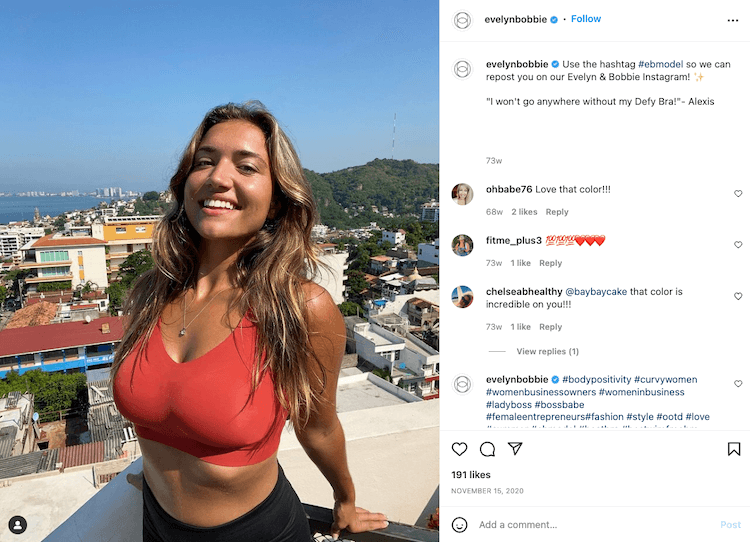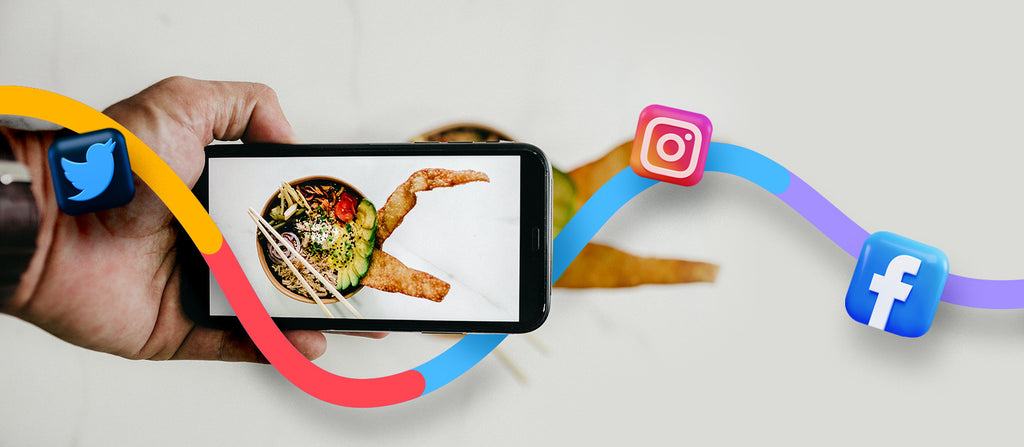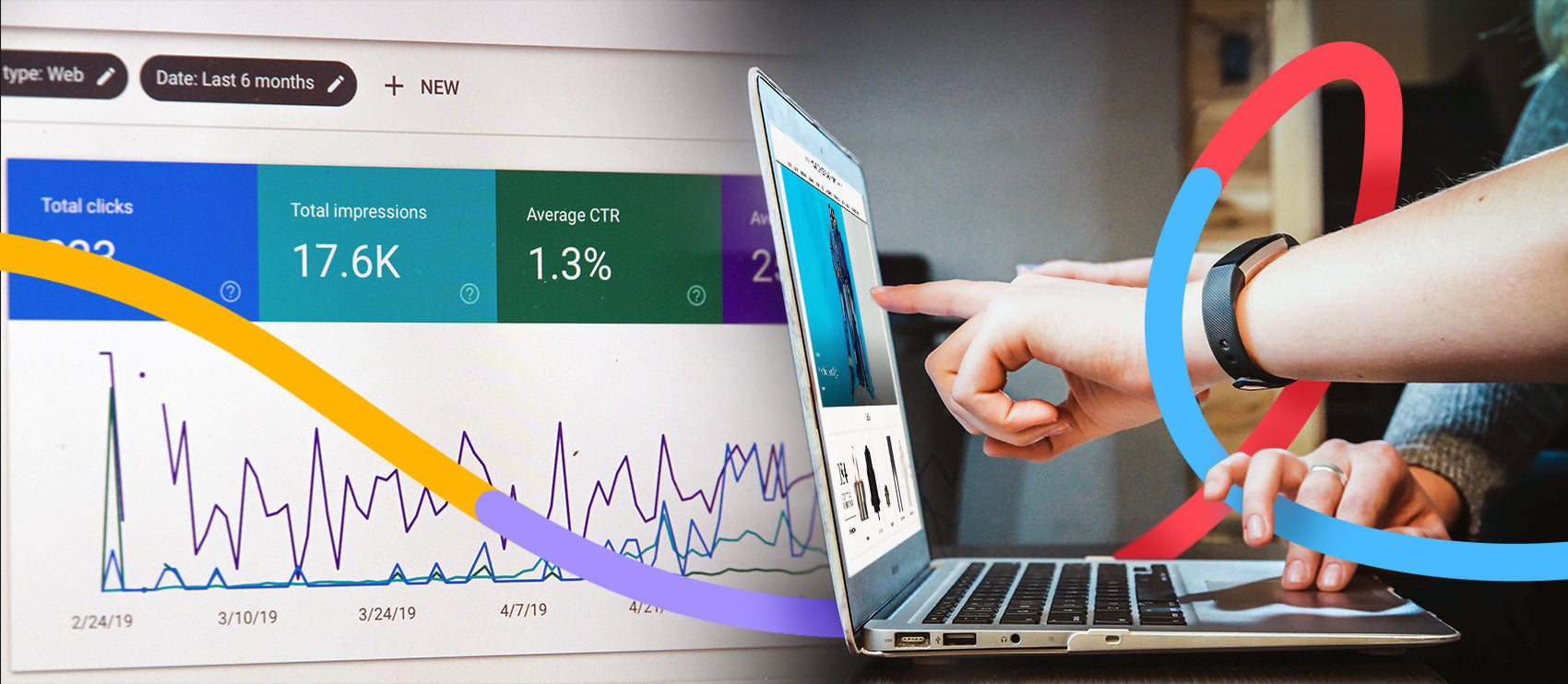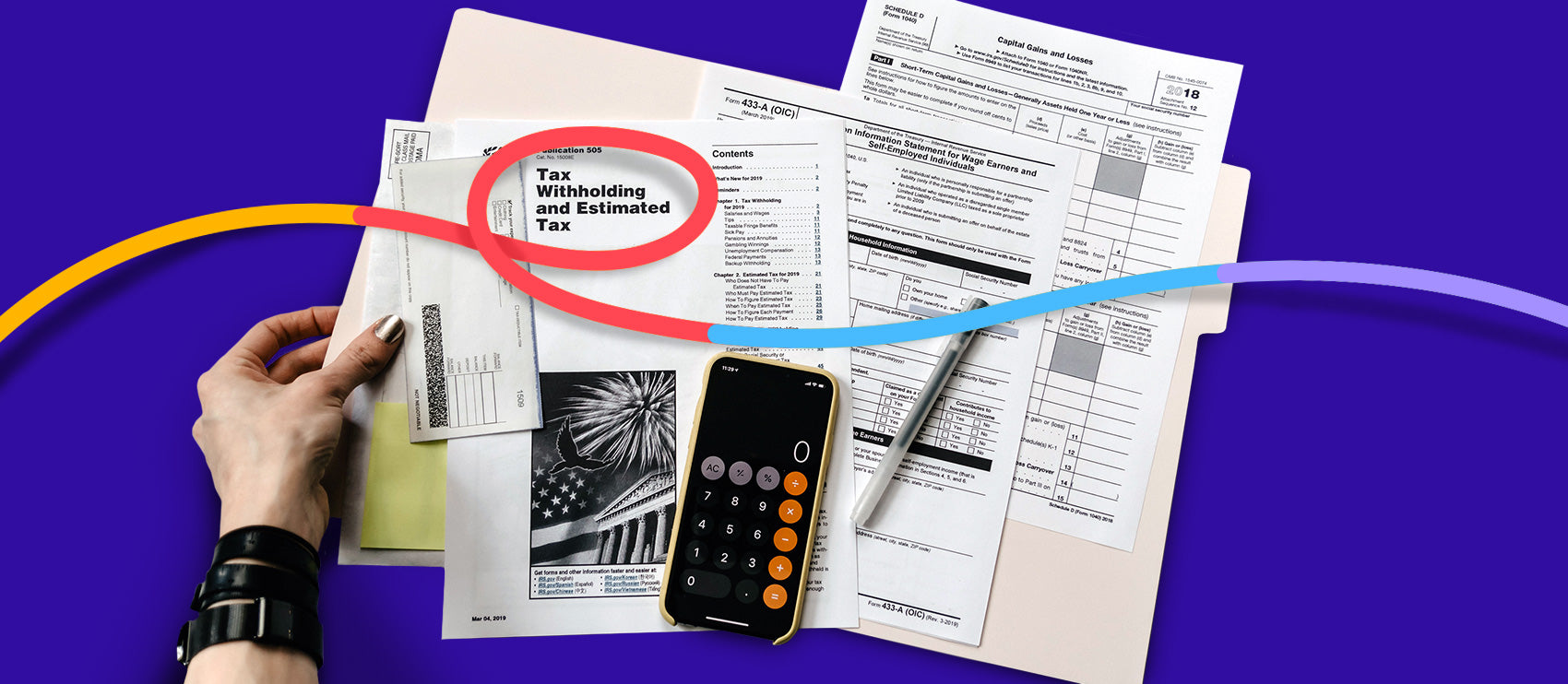Promoting your brand takes many forms. From SEO to content marketing and even paid advertising, there are many options to choose from. And all of these options have one key commonality: they need content. There are only so many ways you can repurpose product photos.
Having the resources and capability required to execute is a challenge for most. As many as 86% of businesses agree it’s one of their biggest challenges.
Fortunately, for even the most resource-strapped businesses, user-generated content can be an effective way to get the content you need to execute your plans—and with minimal cost.
In this article, we'll look at what user-generated content is and how to use it in your marketing and product pages.
What is user-generated content?
User-generated content, or UGC, is written and/or visual media created by users, customers, or fans. UGC can be a social media post, a YouTube video, or even a product review. Sometimes people share UGC organically, and other times brands proactively encourage or even incentivize customers to create UGC.
Handmade vintage brand Peppy Debs promotes its brand on various social media marketing platforms, including Instagram. On its Instagram page, it has a highlight section called “Customers” which curates all the UGC posts featuring Peppy Debs customers in its products.

You might also find UGC videos. Here’s how hydration brand LMNT used a video created by one of its customers on its Instagram channel:

Although UGC is often lower quality than professionally created and edited media, it’s still incredibly impactful as a marketing tool. According to TINT’s State of UGC 2022 report, nearly two-thirds of shoppers find customer reviews more credible than hearing from the brands themselves.
TINT also found 62% of consumers are more likely to click on content like ads, websites, social posts, or emails that feature customer photos rather than an image created by the brand.

Put simply, customers sharing their experiences online is a great way to build trust and further establish your brand with new customers.
Beyond directly impacting sales, UGC is also a valuable addition to your marketing efforts, helping you save time and resources. According to one survey, as many as 37% of brands don’t have enough funding for content creation or don’t have enough time to properly create content.
UGC can reduce the amount of content you need to generate internally so you don’t have to tap into all those resources. Plus, it can serve as inspiration for future marketing campaigns.
Just remember to get the appropriate permissions for use (more on that later).
Where to get user-generated content
One of the main benefits of using user-generated content in your marketing efforts is there is no shortage of places to both find and use quality-content created by your users.
Customer reviews
Customer reviews and testimonials are powerful. More than three-quarters of people “regularly” or “always” read reviews before making a purchase. And you don’t have to wait for potential customers to find these reviews on their own. You can actually take customer reviews and repurpose them as UGC for other channels and purposes.
We do this on social media, for example. We choose some of the top customer reviews from our Trustpilot page and create images with fun design and branding to post on Facebook, Twitter, and LinkedIn. Here’s an example of one:

You can do the same for your product-based business—much like the Peppy Debs example we talked about above.
Whether you get an email from one of your customers raving about their purchase or see a review they’ve left on Google, the more reviews you can showcase on your homepage and product pages the better.
Rowan For Dogs delivers cuteness overload on their product pages using UGC.

Influencer collaborations
Cassie Pauley, social media and PR manager at Evelyn & Bobbie, frequently works with influencers to create UGC for the brand.
For new product launches, she coordinates with their targeted influencers to send them products to test before they’re available to the larger market. “We send out products with printed collateral urging them to post, tag, and share on social media,” says Pauley. “We generally repost it on all of our social media channels.”

Pauley credits their successful influencer collaborations to the exclusivity of early access to the product. “Customers are going to be more likely to share if they're excited, love it and want to be an early adopter,” she says. Using user-generated content for ads and global reach.
This is the approach the marketing team at Würkin Stiffs takes. “Reaching out to followers with a decent-sized social media following and who are already posting good content has been the most successful,” says Dylan Self, ecommerce marketing manager for the brand. “They’re already familiar with the brand and are appreciative of being noticed.”
His advice? “Get out there in the social media scene and really tap into your customer base and network,’ he says. “Send honest DMs and emails, over-deliver on products, and have fun.”

Social media
For starters, you can check all the places you’ve been tagged or mentioned on social media. For some brands, Twitter might be the go-to social network, for others it might be Instagram. Block off some time on your calendar to do a “social media” audit, and take note of how your users are engaging with or talking about your product.
If you want to go a little more advanced, you can set up saved searches around your brand name or targeted keywords in a tool like TweetDeck or Radarr which is a little more platform agnostic. If you’re just starting to grow your brand, you can focus on keywords that are related to your industry as a starting point.
For example, here’s how Lush Cosmetics utilized several pieces of UGC from their most devoted fans which they used for multiple social ad campaigns. If you have the budget, amplify your social media based UGC and turn them into powerful campaigns for your brand.

Solicit submissions
Another great example of a brand using UGC well is Grilla Grills. The brand encourages customers to submit recipes to use with their smokers and grills. It wants the community to be more involved in recipe development for the brand, so it designed an entire page specifically for recipe submissions.

Grilla Grills doesn’t just ask for submissions, they go out of their way to highlight your recipe across their website and social media if chosen. This is a fantastic way to build community while also generating UGC.

At the end of the day, whether you're a brand just getting started or already have a thriving community, engaging with your community and connecting with influencers will get you far.
Where to use UGC
Before we get into how to take advantage of UGC for your brand, you’ll want to think about where and how you can use it. We’re big fans of repurposing content to maximize your investment. You can use user-generated content in multiple places, saving you both time and resources.
Social media
UGC is also incredibly useful for content across your social media channels. Of course, with the emergence of stories on platforms such as Instagram, you can also upload your UGC content to be viewed in real time as opposed to only your timeline.
If you have a global audience for example, you can post on your home feed in the morning, and repost the content on your stories later in the day.
Parachute has encouraged their community to share their photos with the hashtag #myparachutehome, where they can then source incredible UGC from.

Social ads
UGC can be great to use in your ad campaigns as well. For example, instead of using the standard stock photos for your ads, you can highlight the diversity and relatability of your customer base and appeal to a wider range of audiences.
Ritual, a healthcare and vitamin company designed for women, collected dozens of comments from their pages showcasing the demand for a probiotic. Real comments, from real women, show the massive desire for a quality probiotic. You can run similar campaigns using testimonials as well. Get creative!

Publish on your website
In addition to using UGC for customer reviews and social media, high-quality UGC can really make your homepage pop.
There are a few ways you can use UGC on your website. The simpler, more straightforward way—and the one that doesn't require permissions—is by featuring a social feed on your website. This could be on a section of your site or on a separate page dedicated entirely to this purpose (this works especially well if you have a specific campaign).
This is the approach Fenty Beauty takes:

Fenty Beauty aggregates photos from thousands of their users who have used the hashtag #fentybeauty to share their experience.
Use UGC in email marketing
With email marketing continuing to be one of most powerful channels for marketing, increasing loyalty, and driving sales, you can supercharge your efforts by including UGC in your campaigns.
From highlighting your best video testimonials, to including authentic written reviews, email gives you another avenue to share your customer's stories.
Here’s an excellent example by United by Blue which it used in its emails.

Not only does it highlight the socks, it also shares several reviews at the same time, adding a more personal touch. In addition, the image can easily be reposted on social media platforms like Instagram.
Consider using user-generated content in your welcome email series or post-purchase emails to show shoppers they made the right choice. You can even link the image to a product page to help further drive sales.
Promote the images on Google Shopping
Given Google is one of the largest drivers of traffic and awareness online, optimizing UGC for Google Shopping can really go a long way.
It's not as widely used as the tactics listed above, but one good example is the swimwear brand Cupshe.

The more UGC content you have on your site and elsewhere, the better chances it will rank on the front page of a search for your brand. The benefit here is that user-generated content can appear more personal, and stand out from the standard product photos. Using a tool like PowerReviews can help you optimize your user-generated content and increase the chances of those specific images ranking highly.
At the end of the day, you want high-quality product images that will give a great first impression of your brand.
Use the images on product pages
While it’s common to showcase UGC on social media, many businesses forget about the product page. The product page stage is the closest you can get to a conversion, without actually making a sale. As such, using user-generated content to complement your professionally shot and edited product images is a powerful way to make a strong impression.
Here skincare brand Versed uses a mixture of professional shot photos and UGC on their product pages to further highlight their brand’s quality skincare products.

Not only can you use user-generated images, but you can also incorporate testimonials as well.
Getting permission for UGC
Although virtually any brand can benefit from UGC, it’s critical you always get permission to avoid potential social backlash from using content without permission. The last thing anyone wants is for someone to be unhappy with a photo or video being shared without their explicit consent.
Generally speaking, content posted on public social media platforms is fair game, but you can always go the extra mile and ask directly just in case. Many customers are thrilled to be highlighted on your website or social media but you can never be too safe.
If you’re using user-generated content in ads, you’ll definitely want to get explicit permission to cover your bases. You can send out a DM or email as follows:
If you use UGC content for your ads or on social media, it’s critical to always disclose if an influencer was compensated for their endorsement. Generally speaking, UGC in which no payment was involved doesn’t need any disclosure.
For example, in Parachute’s case, you'll notice they commented on the user’s Instagram account asking for permission to use the photo. In the Parachute Home example from earlier, here's how they reached out to a customer on Instagram to get permission.

Parachute Home even goes further in implementing UGC best practices by stating how they collect and use UGC.

More often than not, being overly communicative will do the trick. If for whatever reason they do not want you using their content, be sure to respect their wishes.
That said, sometimes simply retweeting or reposting the content is the best route to take. Given the content is public, you generally don't need direct permission and that can help speed the content process along while ensuring you're respecting your community.
How to edit and repurpose UGC images
We’re all about maximizing your marketing and branding efforts, which means getting the most out of every piece of UGC you have. Editing and repurposing your photos is essential for getting the most bang for your buck.
Here are a few ways to take your UGC to the next level.
Put the image on a white background
Let's say for example, someone shares an amazing photo of them drinking your sparkling water beverage on social media. The photo displays the drink clearly, but the background is a little blurry. What can you do?
You can remove the background entirely using the help of a professional, and put the product on a white background. This gives you flexibility to reuse the image on a variety of platforms and helps ensure that your brand quality continues to shine through.

While hiring a professional is often the easiest route to go, here's the most cost effective way to put a product on a white background. Additionally, we put together a detailed guide on how to change the background color of an image.
With a white background you can easily add more products to the image or even written testimonials to make the image all that much better.
Do a color change
A color change is a powerful editing technique that helps you showcase multiple colors of the same product. This can be especially helpful in industries such as apparel. If you have a favorite piece of UGC you can use a color change editing service to stretch a single photo into a half dozen variations you’ll love.

For example, you can take one piece of UGC and change the color of the product to highlight different color options. If you’re short on time, we offer 6- and 12 hour-turnaround times, perfect for those last minute emergencies.
Photoshop it into a different context
You can also use background removal to add a different environment or background, again making your UGC go further. For example, if you're selling shoes, wearing them during the evening is going to look and feel different than wearing them during the day.
By experimenting with different backgrounds and contexts, you can see what resonates most with your community and customers.
Here’s how Monsoon uses different contexts to showcase their clothing in different contexts.

Retouch to fix imperfections
Even just a little professional photo editing can take your user-generated content to the next level. Maybe there was a smudge on the camera, or a little too much light or you need to remove something from the frame. Minor edits like these are definitely encouraged.
Look at this example below. The woman is wearing a dress from Motif Concept Store, but her bathing suit underneath is a bit distracting. So our designers retouched the photo to remove the bikini top. Now the photo features the dress without any distractions.

That said, you want to ensure you're not overly editing the photo to the point where the photo looks nothing like the original. Remember, this is user-generated content we're talking about! Editing to improve the "attractiveness" of an image is a big-no-no. Not only will that dehumanize your UGC, it can put you at risk of offending some of your most loyal fans.
If you’re considering running a contest or asking for UGC from your community, consider explaining the things to avoid when taking photos.
You'll also want to use this time to enhance your product in the photo. Ultimately a good looking product photo is what you're after, so don't be afraid to spend a little extra time touching up your products.
Add your branding or logo
Last but not least, consider adding your logo or distinct branding to all approved user-generated content. This can be especially powerful for images you plan on using for social media, as it further extends your brand awareness at next to no cost.

Using a tool like GetStencil or Canva, you can quickly add your logo to your image. From a design perspective, we encourage keeping the branding in the same spot on every image, as moving the logo around can cause some confusion.
If you’re using the image in your emails, experiment with a call-to-action (CTA) button below. You can also hyperlink the image and test whether or not that improves conversions.
User-generated content, a marketer’s secret advantage
Creating content is hard. Fortunately, UGC is one of the most effective ways to improve your content and drive more sales.
If you're not using UGC in your marketing strategy you're missing out. If you need a hand getting your user-generated content where it needs to be, we can help with all your editing needs. In under six hours we can edit your UGC content while you focus on the more pressing issues of growing your brand.
Discover your virtual photo editing studio, starting at just 39¢ per image




